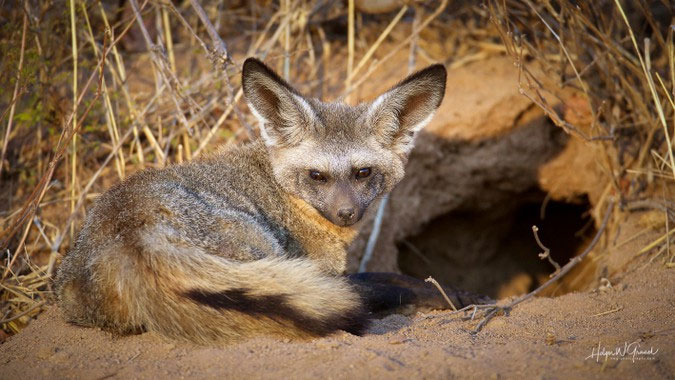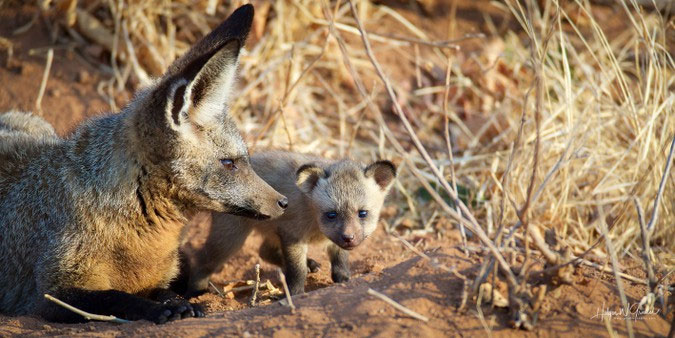Africa's most bizarre fox: Cute to beat but even hunted newspapers
With an area of up to 22,000 km2, Ruaha National Park of Tanzania is indeed Africa's largest protected area.
Africa's largest wildlife sanctuary
Thanks to the flowing Great Ruaha River, Tanzania forms an extremely large wild ecosystem.
Along the banks of the Great Ruaha River are vast fields, green trees and grass. From rare predators such as lions, leopards, cheetahs . to unique herbivores like Waterbuck, Impala, wild buffalo, zebra, elephant, giraffe . All Ruaha have.
Compared to other famous protected areas in Africa, Ruaha is located in a more remote location. But also, it still retains the original pristine intact. In plants alone, this national park has reached 1650 species. In addition, it is home to 580 species of birds, 80 animals, and 10% of lions in the world. It is easy to see whether the newspaper hunts or lions roam the grasslands.
But let's put aside the diversity of Ruaha, to meet the lovely and frightening protagonist: the bat ear fox .

Bat ear fox.
Possesses big ears, unique black border
The bat ear (Otocyon megalotis) is an animal belonging to the Canine family. They have only two distinct populations, one living in the South, and one in East Africa.
The characteristic of bat ear fox is big ears, 13cm long while the body is only about 55cm. These ears have black borders, are extremely audible, can hear the sound of underground.

Bats' ears have extremely hearing ears, hearing the sound of underground bites.
The main food of the bat ear fox is Hodotermes mossambicus , which accounts for 80-90% of the daily diet. But if they don't get enough species of this termite, they can also eat other termites, insects, insects, sometimes catching small birds and reptiles.
Most bat ear foxes live in arid, short grass and low shrub areas. They know how to dig burrows to avoid the sun and wind, the temperature goes up and down erratically and gives birth to children.
If you're lucky, you can see a bat-eared fox with a baby in Ruaha. However, to "catch" this luck is also a bit hard. First, you must reach the area where the fox ear digs a cave by walking. Because they are so shy, you also have to move very gently, avoiding hitting.
When the sun shines bright and bright rays of sunlight on the ground, it is also when the fox leaves the cave and relaxes to enjoy the warmth. It took a long time after that, the children were shyly poking their heads out.

In the bat ear fox, the male is fully responsible for taking care of the young.
Interestingly, the bat ear fox is the male bear all responsibility for taking care of the young. The fox's ears give birth to the first year, after about 60-70 days of pregnancy. But from the time of childbirth, it will not do anything but breastfeed.
From child care, moving the baby to finding food outside to feed them is the duty of the father. Must be from 17 days old, the fox will leave the cave. After about 14-15 weeks of breastfeeding, they started going with their parents to look for food.
Dare to fight even with the most fierce predators
Normally, bat ear foxes only worry about picking up the termites. They belong to a highly social species, often living in pairs or in groups, with the largest being 15 individuals / herd. After being full, the whole playing together, licking each other's hair.

The bat ears "sneak" even the lion.
However, when faced with danger, they will become extremely fierce, even the lion must wait.
In front of larger predator species, bat ear foxes often set their fur, cut their ears and bared their fangs. They clearly show that they are always ready to fight back, and really "dare to dare to do it".
Even when severely injured, bat ear foxes still vehemently resist. Sometimes, they also won a glorious victory. And even if they fail, they will still hurt their enemies.
- See earlobe birch leopard
- Male fox at home doing housework
- 10 cute animals are 'beasts' cannibalistic
- Read electronic newspapers to help you live longer
- Online newspapers surpassed the paper in America
- Video: Beating eggs under the sea
- 15 cute animals but you have to stay away
- Photograph of extremely rare Persian leopard in Russia
- Lemurs are being hunted
- Apricot newspapers were bitten by the same type in the death battle
- Why is hard to beat the flies?
- Rats eat with newspapers
- Interesting things about cougars
- 8 incredible bizarre animals exist in the world
 Animal 'suffering' after hibernation
Animal 'suffering' after hibernation Why do goats climb well?
Why do goats climb well? Scientists were surprised to see chimpanzees eating turtles
Scientists were surprised to see chimpanzees eating turtles Giant catfish died deadly due to drought in Thailand
Giant catfish died deadly due to drought in Thailand